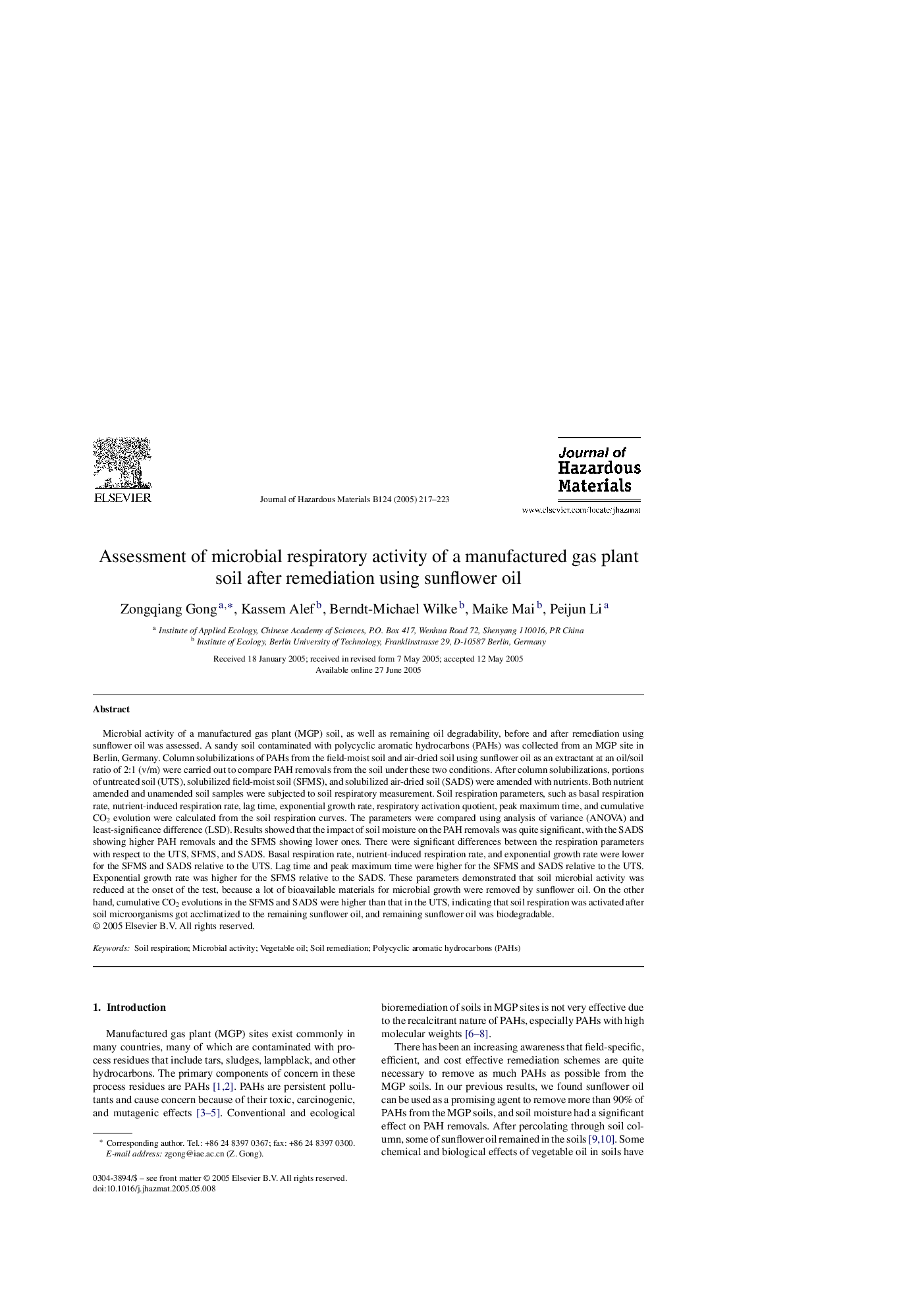| Article ID | Journal | Published Year | Pages | File Type |
|---|---|---|---|---|
| 9674181 | Journal of Hazardous Materials | 2005 | 7 Pages |
Abstract
Microbial activity of a manufactured gas plant (MGP) soil, as well as remaining oil degradability, before and after remediation using sunflower oil was assessed. A sandy soil contaminated with polycyclic aromatic hydrocarbons (PAHs) was collected from an MGP site in Berlin, Germany. Column solubilizations of PAHs from the field-moist soil and air-dried soil using sunflower oil as an extractant at an oil/soil ratio of 2:1 (v/m) were carried out to compare PAH removals from the soil under these two conditions. After column solubilizations, portions of untreated soil (UTS), solubilized field-moist soil (SFMS), and solubilized air-dried soil (SADS) were amended with nutrients. Both nutrient amended and unamended soil samples were subjected to soil respiratory measurement. Soil respiration parameters, such as basal respiration rate, nutrient-induced respiration rate, lag time, exponential growth rate, respiratory activation quotient, peak maximum time, and cumulative CO2 evolution were calculated from the soil respiration curves. The parameters were compared using analysis of variance (ANOVA) and least-significance difference (LSD). Results showed that the impact of soil moisture on the PAH removals was quite significant, with the SADS showing higher PAH removals and the SFMS showing lower ones. There were significant differences between the respiration parameters with respect to the UTS, SFMS, and SADS. Basal respiration rate, nutrient-induced respiration rate, and exponential growth rate were lower for the SFMS and SADS relative to the UTS. Lag time and peak maximum time were higher for the SFMS and SADS relative to the UTS. Exponential growth rate was higher for the SFMS relative to the SADS. These parameters demonstrated that soil microbial activity was reduced at the onset of the test, because a lot of bioavailable materials for microbial growth were removed by sunflower oil. On the other hand, cumulative CO2 evolutions in the SFMS and SADS were higher than that in the UTS, indicating that soil respiration was activated after soil microorganisms got acclimatized to the remaining sunflower oil, and remaining sunflower oil was biodegradable.
Keywords
Related Topics
Physical Sciences and Engineering
Chemical Engineering
Chemical Health and Safety
Authors
Zongqiang Gong, Kassem Alef, Berndt-Michael Wilke, Maike Mai, Peijun Li,
